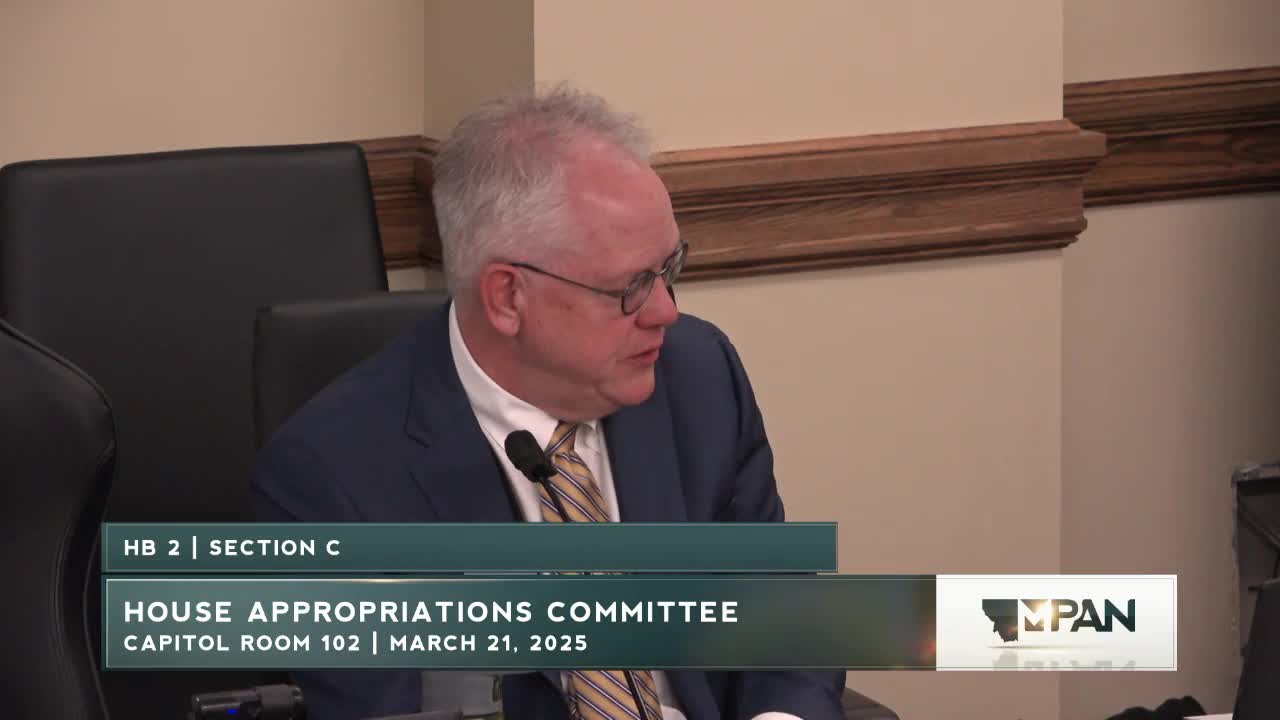Senate bill proposes $10M trust for noxious weed program funding
March 21, 2025 | 2025 Legislature MT, Montana
This article was created by AI summarizing key points discussed. AI makes mistakes, so for full details and context, please refer to the video of the full meeting. Please report any errors so we can fix them. Report an error »

In a recent meeting of the Montana House Appropriations Committee, a significant discussion unfolded regarding funding for the state's noxious weed program. The committee reviewed a proposal that included an additional $600,000 to enhance the existing budget, which already featured a substantial request of $10 million aimed at establishing a trust for the program. This proposed funding would effectively double the current grant offerings, raising questions about the necessity and planning behind such an increase.
One committee member expressed skepticism about the need for the additional funds. After consulting with local experts involved in managing noxious weeds at the county level, they reported that while more funding would be beneficial, the amount requested seemed excessive. This raised concerns about the transparency and purpose of the funding, suggesting that the allocation might lack a clear, defined plan for its use.
The member highlighted a pattern of incremental funding increases—$600,000 here, $400,000 there—without a comprehensive strategy to justify the total financial request. This prompted a broader conversation about the importance of having a well-defined plan when seeking additional resources, especially when it comes to environmental management and public funds.
As the committee continues to deliberate on this matter, the discussions underscore the need for clarity and accountability in government spending, particularly in programs aimed at addressing ecological challenges. The outcome of these deliberations could have lasting implications for how Montana manages its noxious weed issues and allocates resources in the future.
One committee member expressed skepticism about the need for the additional funds. After consulting with local experts involved in managing noxious weeds at the county level, they reported that while more funding would be beneficial, the amount requested seemed excessive. This raised concerns about the transparency and purpose of the funding, suggesting that the allocation might lack a clear, defined plan for its use.
The member highlighted a pattern of incremental funding increases—$600,000 here, $400,000 there—without a comprehensive strategy to justify the total financial request. This prompted a broader conversation about the importance of having a well-defined plan when seeking additional resources, especially when it comes to environmental management and public funds.
As the committee continues to deliberate on this matter, the discussions underscore the need for clarity and accountability in government spending, particularly in programs aimed at addressing ecological challenges. The outcome of these deliberations could have lasting implications for how Montana manages its noxious weed issues and allocates resources in the future.
View full meeting
This article is based on a recent meeting—watch the full video and explore the complete transcript for deeper insights into the discussion.
View full meeting
